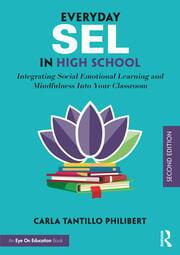The Future of SEL in Schools: Emerging Trends and Innovative Directions for social-Emotional learning
In today’s rapidly evolving educational landscape, Social-Emotional Learning (SEL) is gaining unprecedented attention.As more research uncovers the profound impact SEL has on academic achievement, mental health, and lifelong success, schools worldwide are reimagining their approaches to social-emotional education.But what does the future hold for SEL in schools? Let’s explore the emerging trends, innovative tools, and best practices shaping the next generation of SEL programs.
Why SEL Matters in the Modern classroom
Social-emotional learning is more than just a buzzword—it’s a critical component for cultivating well-rounded students. The demands of the 21st-century workplace, the complexity of social interactions, and heightened mental health concerns have accelerated the need for intentional SEL practices in schools. According to CASEL (collaborative for Academic, Social, and Emotional Learning), SEL empowers students to manage emotions, set positive goals, show empathy, maintain healthy relationships, and make responsible decisions.
- Improved academic performance
- Decreased behavioral issues
- Greater emotional resilience
- Enhanced school climate
Emerging Trends in SEL: What’s Next?
As we look to the future of SEL in schools, several key trends and directions are reshaping how educators approach social-emotional learning:
1. integration of SEL with Academic Curriculum
Increasingly, SEL is no longer taught in isolation but woven into daily academic instruction. Math, science, language arts, and even physical education can become platforms to discuss self-awareness, teamwork, and perseverance.
2. Data-Driven Personalization
Schools are embracing technology to track and assess students’ social-emotional growth, using data analytics to tailor interventions to each child’s needs. tools like Panorama Education and Schoolzilla provide dashboards that help educators identify patterns, strengths, and areas for growth.
3. Culturally Responsive SEL
The next wave of SEL emphasizes cultural relevance and inclusivity. Programs are designed to honor each student’s background and foster identity growth while building empathy for others.
4. SEL and Mental Health Integration
as mental health challenges among students rise, the line between SEL and mental health support is blurring. Some schools are embedding mindfulness, trauma-informed care, and counseling services within their SEL frameworks.
5. Technology-Enhanced SEL
From interactive apps to AI-based emotion recognition tools, technology is revolutionizing how SEL is delivered, tracked, and personalized. Programs such as Second Step SEL and digital platforms like MoodMeter are making SEL accessible anytime, anywhere.
innovative Directions: SEL Beyond the Classroom
Future-focused SEL is expanding beyond the physical boundaries of the classroom:
- family and Community Engagement: Modern SEL programs include workshops and resources for parents,bridging the gap between home and school.
- Peer-Led Initiatives: Peer mentoring, student-led SEL activities, and collaborative projects empower youth leadership and shared duty.
- Experiential Learning: Field trips,service projects,and real-life problem-solving scenarios boost self-efficacy and empathy in authentic contexts.
- Virtual & Blended SEL: Hybrid learning environments allow for flexible, scalable delivery of SEL content—even during disruptions like the COVID-19 pandemic.
Case Studies: SEL in action
Case Study 1: Austin Independent School District (Texas, USA)
By embedding SEL goals into district-wide policies and daily learning, Austin ISD saw a 25% drop in disciplinary referrals and an advancement in graduation rates over a five-year span. The district’s structured curriculum and continuous staff training played a crucial role in sustained success.
Case Study 2: Toronto District School Board (Canada)
TDSB’s innovative “Well-being for All” approach links SEL with equity initiatives, focusing on culturally responsive practices. This approach has fostered greater inclusion and engagement, particularly among marginalized student groups.
These real-world examples illustrate how prioritizing social-emotional learning leads to positive outcomes for both students and educational communities.
Practical Tips for Implementing Future-Ready SEL
Whether you’re an educator, administrator, or parent, adopting innovative SEL strategies doesn’t have to be overwhelming. Here are actionable steps for successful integration:
- Start Small: Incorporate brief SEL check-ins or mindfulness moments into existing routines.
- Utilize Digital Tools: Leverage apps and platforms to monitor progress and foster engagement.
- Empower student Voice: Involve students in designing, evaluating, and leading SEL initiatives.
- Invest in Training: Provide ongoing professional development focused on SEL strategies and cultural competence.
- Connect with Families: Share SEL resources, host workshops, and encourage alignment between home and school values.
- Measure & Reflect: Set clear goals, collect feedback, and continuously refine your SEL approach for lasting impact.
Personal Perspective: The Transformative Power of SEL
As a former classroom teacher, I witnessed first-hand the ripple effects of prioritizing social-emotional learning. Students who felt seen, heard, and valued developed stronger relationships—not just with peers, but with themselves. They became more resilient in the face of challenges and took greater ownership of their learning journeys.In the years ahead, I believe SEL will serve as the backbone of truly transformative education, unlocking every student’s full potential.
Conclusion: Embracing the Future of SEL in Schools
As we look to the future of SEL in schools, it’s clear that social-emotional learning will remain a cornerstone of holistic education. By integrating SEL into academics, leveraging technology, valuing diversity, and fostering genuine connections, schools can prepare students not just for tests, but for life. Embracing these emerging trends and innovative directions will empower educators and learners to thrive in an ever-changing world. Now is the time to invest in SEL—for the wellbeing of future generations.
Subscribe to our newsletter for the latest trends, research, and practical tips on SEL in schools!

